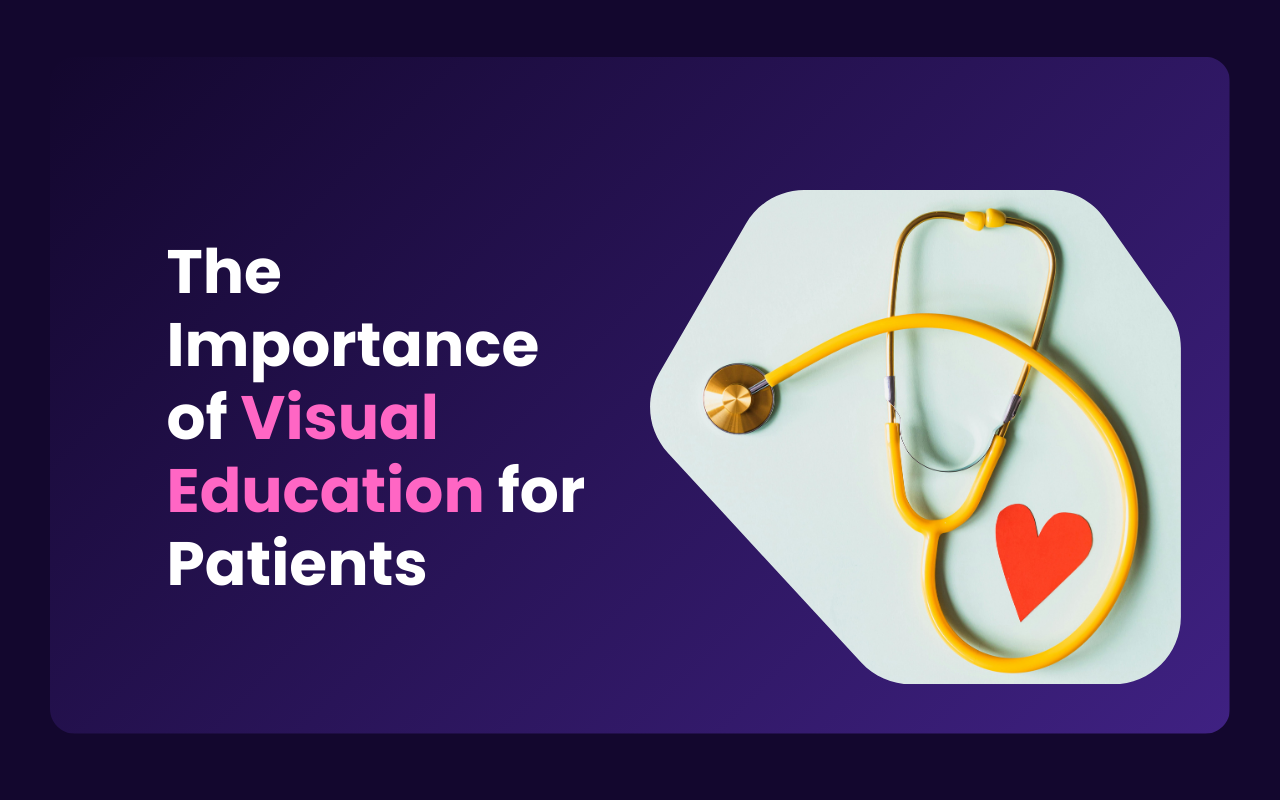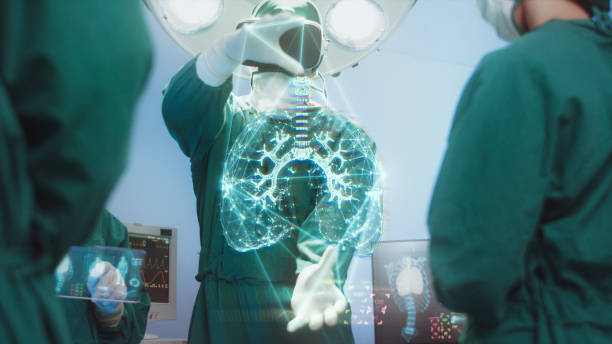
The Importance of Visual Education for Patients
Getting sick can drain our wallets and bombard our brains with too technical information that we can sometimes hardly understand. Such circumstances can make decision-making and compliance with treatment challenging.
Although medical and healthcare professionals use informative materials to elicit desired patient behaviors, one strategy is more effective than the others – visuals.
But why? To learn the answer, let’s dig deeper into the importance of visual education in patient education.

Image created with Puppetry
What is Patient Education?
Knowing the value of visuals in patient education starts with appreciating this element of patient care.
The American Academy of Family Physicians describes patient education as interventions or activities designed and implemented by medical (i.e., doctors) and healthcare practitioners (i.e., nurses) to influence desired patient behaviors.
The activities facilitate changes in the patient’s skills, attitudes, and knowledge to improve or maintain health, prevent unwanted complications, and restore health.
Why Use Visuals in Patient Education?

Patients deserve the best care, including the most accurate health information. Patient education serves this purpose. But why should medical and healthcare practitioners use visuals instead of plain text? Let’s examine the reasons.
Delivers information quickly and effectively
Patient education isn’t different from academic learning (i.e., pupils and students in schools and adults in continuing education courses). The only difference is the content.
Medical and healthcare professionals (M&HCPs) “teach” health promotion activities, disease prevention measures, treatment options, and rehabilitation processes.
Unfortunately, health information is more complicated than general knowledge. Terminologies (including abbreviations and shorthands) can make medical information seem fuzzy and incomprehensible.
Unsurprisingly, the National Institutes of Health requires health information publishers to create Grades 6-7 reading-level educational materials.
Studies show that patient education materials have readability levels between Grade 11.2 and 13.8. Only one in 50 health information materials meets the Grade 6-7 NIH recommendation.
These figures suggest that many patients don’t understand the health information in such patient education materials. They read the words, find meaning, process their implications, and determine real-world applications. It’s too long.
Not visuals!
Experts say the human brain processes visual information more quickly. More importantly, visuals (i.e., pictures and videos) evoke stronger and faster emotional reactions.
So, visual education beats text-only health information in patient education.
Promotes a higher understanding of the care plan

The human brain processes visuals differently than text. Although words can also evoke emotions, certain conditions might prevent some patients from processing the information more accurately (i.e., aphasia). They can read but don’t comprehend.
Every patient has a care plan designed specifically for them, considering various factors. It’s a tailor-made “battle plan,” outlining the strategies and techniques necessary to treat the illness, facilitate recovery, and ensure a high quality of life.
Patients know the healthcare team’s objectives, what interventions they must implement to meet the goals, and how they can evaluate treatment progress and effectiveness.
They will learn more about their health condition and feel more confident about spreading the word and educating family and loved ones about it. Patients become “health advocates” because they understand the care plan.
Although it’s safe to assume some patients don’t need such care plan information, most do. Like consumers, 21st-century patients are well-informed and expect healthcare professionals to stay loyal to the do-no-harm Hippocratic Oath.
Ensures better comprehension of health risks
Patient education isn’t all about addressing current health conditions. It also includes equipping patients and their significant others sufficient and credible information about disease prevention and health risk mitigation.
For example, uncontrolled high blood pressure increases a person’s risk of a stroke, heart attack, kidney problems, heart failure, aneurysm (blood vessel rupture), and eye problems. Memory deterioration, cognitive decline, and dementia can also occur.
Patients can read these risks, but do they comprehend its implications?
Visuals help convey information more quickly and effectively than words. Patients will appreciate the impact of certain lifestyles and diseases on their future. They can prepare for it by avoiding risky behaviors and engaging in health-promoting activities.
Promotes inclusivity
Visuals don’t discriminate. They don’t require patients to have a minimum ‘reading level’ to understand and appreciate health information. People of any color can also consume health and patient education uniformly.
Facilitates easier recall of health information
Image of a doctor created with Puppetry.
As mentioned, visuals connect to human emotions faster than written words. Hence, the more vivid and stunning the image, the higher the likelihood of easy memory recall.
For example, the text "excessively high blood pressure can lead to heart attack” might be easy to read. However, an image of a person grasping the chest, visibly in excruciating pain, will have a different effect. Add a picture of a heart broken in two, and the message becomes more precise.
More importantly, patients who see this image will have it etched into their memories. When people ask about the possible complications of hypertension, the image will automatically pop up.
Promotes better adherence to healthcare instructions
Healthcare professionals want patients to be independent by letting them perform health-related activities when possible.
Although patients and their loved ones know how to do daily activities, some aspects of the care plan require specialized knowledge and skill. And that's why medical and health instructions are crucial to a treatment plan.
For example, HCPs teach patients how to change a wound dressing at home, what materials to prepare, and the precautions to observe. Likewise, they demonstrate how to administer a medication, watch for side effects, and know what to do if something unwanted occurs.
Unfortunately, some instructions are too complex for some patients to comprehend. They might perform the activity but incorrectly.
Moreover, health instructions that are too complicated can make the patient unable to perform the activity.
Non-compliance and non-adherence to health instructions is like undermining the patient’s care plan.
Healthcare providers and doctors can use animated videos for short educational content to explain and present a topic, like how to change a wound dressing at home or exercise correctly with COPD.
Today, tools like Puppetry allow users to do that quickly and create animated talking presenters as easy as typing a sentence. Here's a guide on how to use the Puppetry Studio to get you started.
Conclusion
The importance of visual education in patient education lies in its ability to ensure quicker and more effective comprehension. The human brain processes images differently and faster than written words, allowing patients to digest information and make necessary decisions impacting their health. And that leads to better treatment compliance and a faster return to health.